Recent Articles
Popular Makes
Body Types
10 Things You Need to Know About the 2023 Toyota bZ4X
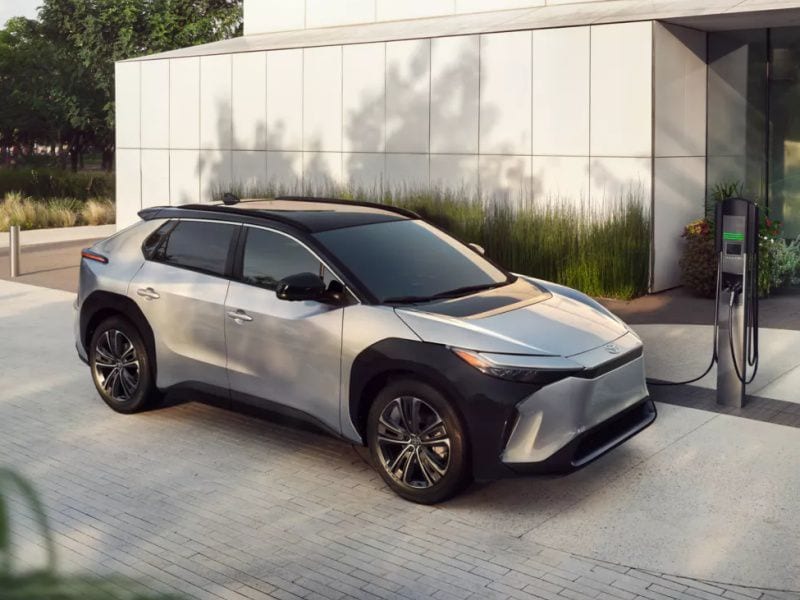
2023 Toyota BZ4X ・ Photo by Toyota
Toyota is counting on the new Toyota bZ4X battery-powered compact crossover to win back the title it once enjoyed as the most environmentally conscious car company on the planet. The Japanese carmaker has been the leader in hybrid vehicles since, well, since there were hybrid vehicles. But over the past few years, the battery-powered electric vehicle, epitomized by Elon Musk’s ubiquitous Tesla, has captured the attention of the environmental set, government regulators, and even the general public. While hybrids like the Toyota Prius were once the coolest antidote to global warming, current thinking is that battery-electric vehicles (BEVs) are significantly better for the Earth because they don’t emit any carbon dioxide at all. So, while Toyota is still very strongly committed to hybrids and plug-in hybrids, it has just introduced the bZ4X in a bid to jumpstart its green cred all over again. Here are 10 things you need to know about the Toyota bZ4X.
1. First in a Series of Battery-Electric bZ Models
Toyota’s all-electric bZ4X isn’t just a single car designed to capture a lot of headlines but relatively few sales. Instead, the compact SUV is the first of what Toyota promises will be an extensive line of BEVs that it will introduce over the course of the next several years. “Toyota bZ” is the global battery-electric brand from the automaker. The numeral and letter that follow bZ indicate the model number and relative size — a Toyota bZ5X would be larger than the just-introduced bZ4X, while a bZ3X would be smaller. The letter “X” indicates the vehicle is a crossover. It will be important to keep this straight because Toyota plans to turn out a lot of bZ models fairly quickly. It says seven dedicated BEVs will carry the Toyota bZ brand. When one includes hybrids, plug-in-hybrids, battery-electrics like the bZ4X, and fuel cell vehicles like the Toyota Mirai, Toyota plans to expand to around 70 electrified models globally by 2025.
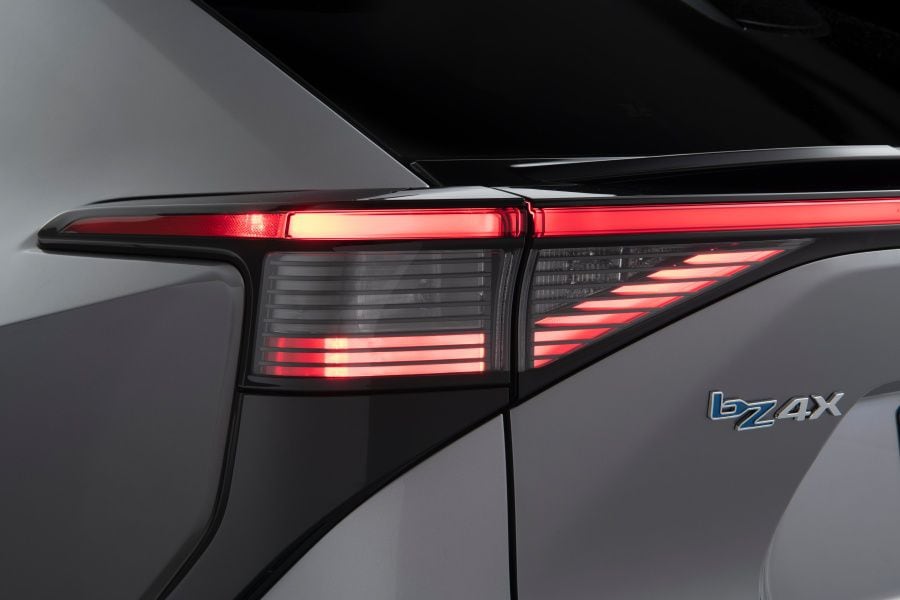
Photo by Toyota
2. Built on a Dedicated EV Platform
Toyota is taking the same approach that many other automakers are taking as they add battery-electric vehicles to their portfolios. It has created a battery-electric-dedicated platform it calls e-TNGA, and the bZ4X and subsequent BEV models will be based on that platform. Previously, Toyota’s forays into battery-electric vehicles with two iterations of RAV4 crossover utility used the crossover’s conventional underpinnings. With a dedicated platform that can accommodate both front-drive and all-wheel drive, Toyota can create a number of vehicles using much of the same engineering. That saves cost and improves time-to-market. The e-TNGA platform accommodates a high-capacity lithium-ion battery pack placed flat under the floor. This puts the battery's enormous weight low in the vehicle, giving the bZ4X a low center of gravity. The diverse array of electrified that will be based on the platform is expected to help Toyota make progress toward its goal of carbon neutrality by 2050.

Photo by Toyota
3. Saving Energy Is a Big Deal
If you are wondering if “bZ” stands for something, you can rest assured it does. It stands for “beyond zero emissions,” expressing Toyota’s belief that the vehicle lineup needs to do more for its customers than simply deliver no-emission driving. The engineering team has made concerted efforts to make the bZ4X and subsequent bZ models comfortable and convenient in any driving situation and in any weather condition. And to do that when the power supply is limited to the amount that can be stored in the onboard battery pack takes extra effort. The engineering team focused on energy-saving and cruising range for year-round driving. Winter weather and its cold temperatures are especially hard on BEVs. The bZ4X uses a heat pump system for heating and air conditioning. The front seat area of the car is equipped with a radiant foot and leg heater. And more conventionally, the bZ4X also uses seat and steering wheel heaters.
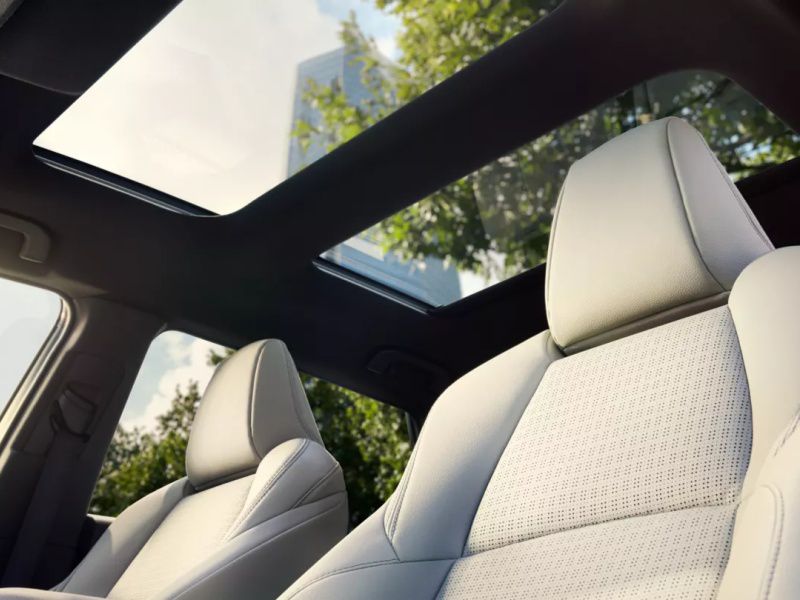
Photo by Toyota
4. bZ4X Has an “Edgy” Exterior
Toyota says the design theme for the bZ4x is “hi-tech and emotional,” and it is obvious from looking at the crossover that its designers felt they had license to get wild. The front end delivers the most interesting aspect. The vehicle has a shark nose but the shark doesn’t have teeth. In other words, the front is grille-less because BEVs don’t need grilles for airflow. Both front and rear fenders are accentuated, and the bodysides have very complex sculpting. The windshield rises at a sharp angle from the hood, and the side glass is narrow. The roof sweeps rearward to a fastback-style rear end that has very prominent taillights. In all the bZ4X strikes a nice balance between conventional and forward-looking. Both aerodynamic and body-weight reduction were important factors in the design, so practicality is integrated into the overall result.
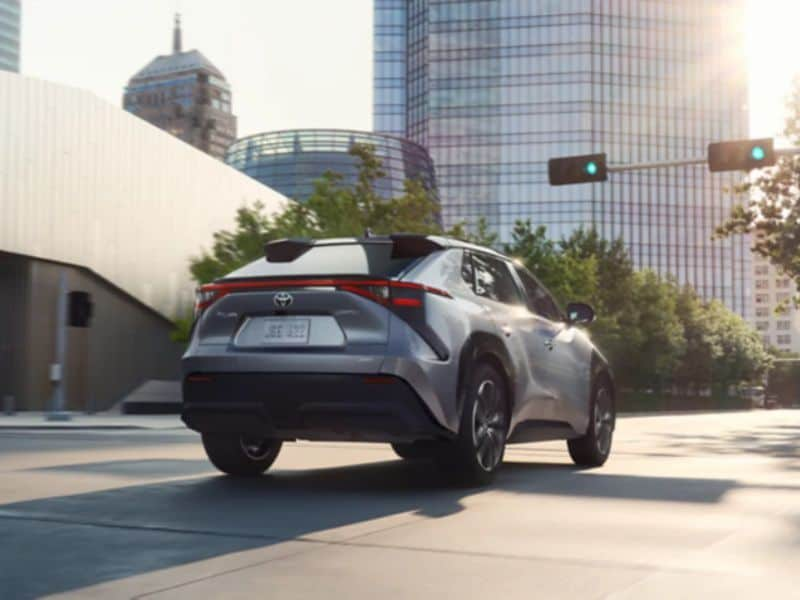
Photo by Toyota
5. bZ4X Has a Dramatic Interior
The same license that germinated into the bold exterior design obviously swept into the design of the interior. The steering wheel is conventional, but the instrumentation, infotainment, and system controls are not. The instruments are in a high-mounted pod that sits atop the dashboard rather than residing in it. And that pod has wings that extend rearward from the left and right. Sightlines going forward are especially expansive. The large, horizontal infotainment screen also has a home outside the traditional dash panel. It is positioned closer to the driver and passenger than it would be if it had the conventional placement. Below it pushbuttons take care of many of the standard functions like heating, ventilation, and air conditioning. The bZ4X has conventional seating for up to five passengers and the rear setbacks are split-folding to enable more cargo-carrying versatility. The panoramic roof overhead adds light to the car.
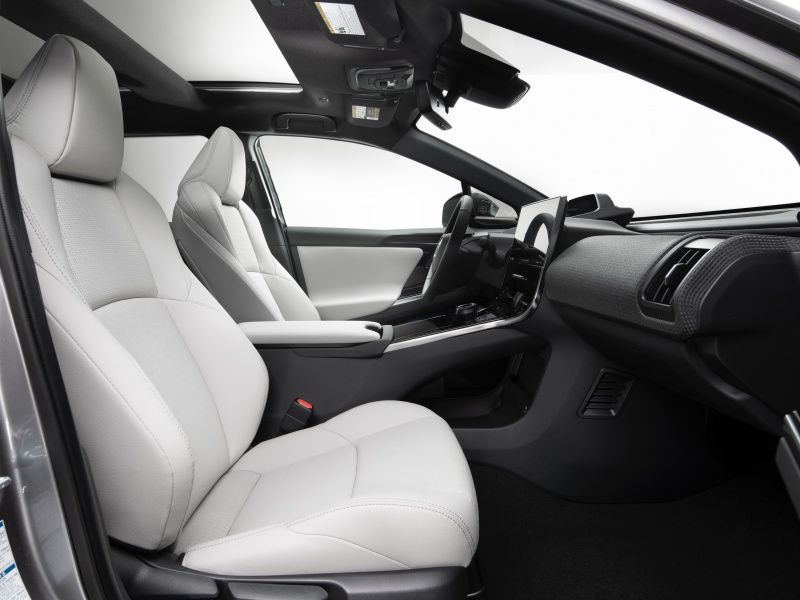
Photo by Toyota
6. High-Tech Connectivity
Drivers and passengers will have the ability to interact with the bZ4X’s system via sight, touch, and voice. At the same time, those of us currently residing in the present can hook up devices and charge them using accessible USB ports in both A and C configurations that are scattered throughout the cabin like wildflowers in a meadow. The Toyota Drive Connect system uses map information from ”the cloud” to deliver real-time traffic information and parking space availability. The subscription-based Drive Connect also powers the digital key that gives owners the ability to lock, unlock, and start the bZ4X with a tap on their smartphones. The digital key can also be transferred to other smartphones, enabling the sleek BEV to be borrowed and valet parked. As with many of the newest vehicles, over-the-air software updates are part of the bZ4X’s skillset.
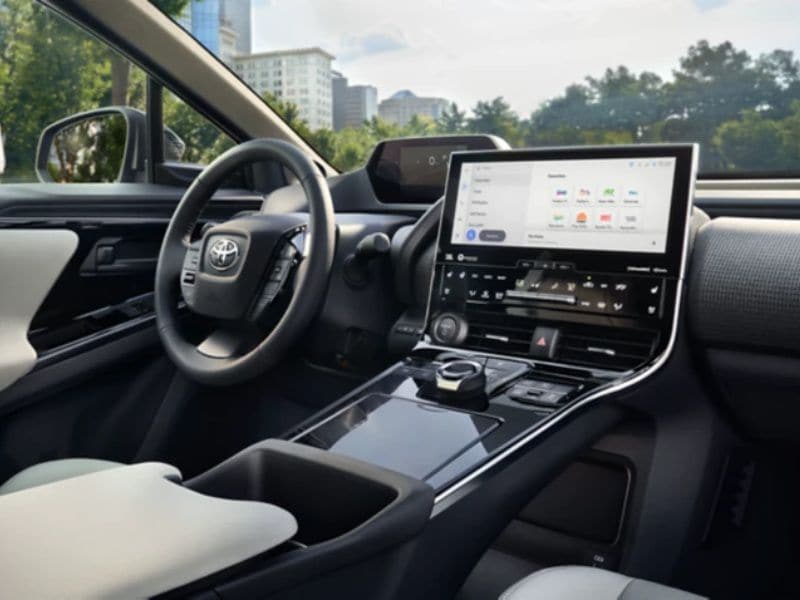
Photo by Toyota
7. Multiple Drivetrain Choices
In terms of drivetrain, the bZ4X will be served up several ways. The base configuration has front-wheel drive with a single electric motor propelling the vehicle. In that form, the BEV will be fitted with a 201-horsepower AC synchronous electric motor-generator. The all-wheel-drive version will have two 80kW electric motors, one for each axle, delivering a combined 215 horsepower. The vehicle’s electric motors are squared off against serious amounts of weight because the crossover weighs a ton — actually, more than two tons. Both front-drive and all-wheel-drive bZ4Xs will be fitted with the same 71.4kWh lithium-ion battery pack. The batteries are compatible with high-output chargers available worldwide, and Toyota says the battery pack can be charged up to 80% capacity in an hour. The automaker also says the front-drive bZ4X will offer 250 miles of range on a full charge, but declined to give a range figure for the AWD version.
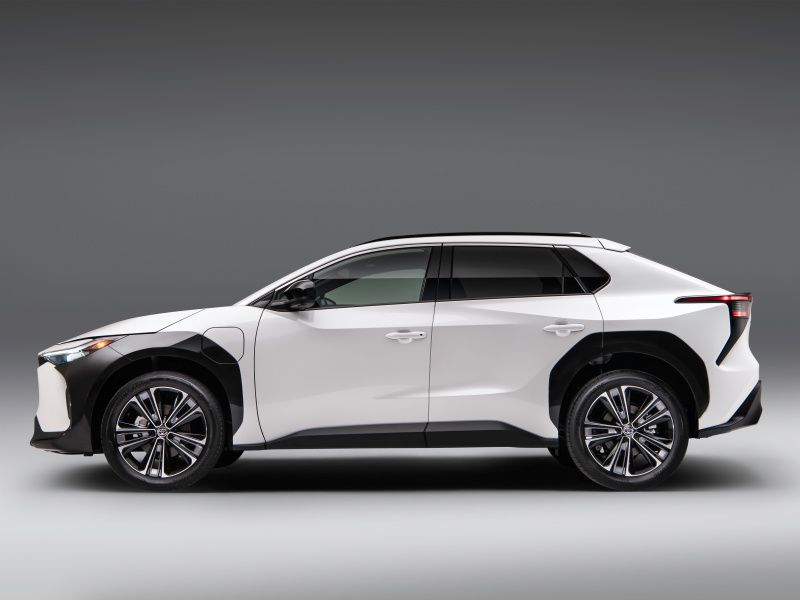
Photo by Toyota
8. On- and Off-Road Capabilities Are Part of Its Persona
One might picture a sleek, futuristic crossover like the bZ4X to be engineered for on-pavement use with off-road relegated to the occasional pea-gravel driveway. But that’s not the case. Toyota says the vehicle will have “the off-road performance you’d expect from a capable SUV, coupled with the smooth and fun driving performance inherent in an all-electric vehicle.” We can’t attest to that yet because we haven’t driven the vehicle. But it has a strut front suspension and a double-wishbone rear suspension that sounds promising. The battery cross-framing structure contributes to the vehicle body’s overall rigidity, and that makes more precise tuning of the suspension possible. One thing the bZ4X will have going for it off road — and leaving stoplights for that matter — is virtually instantaneous torque.
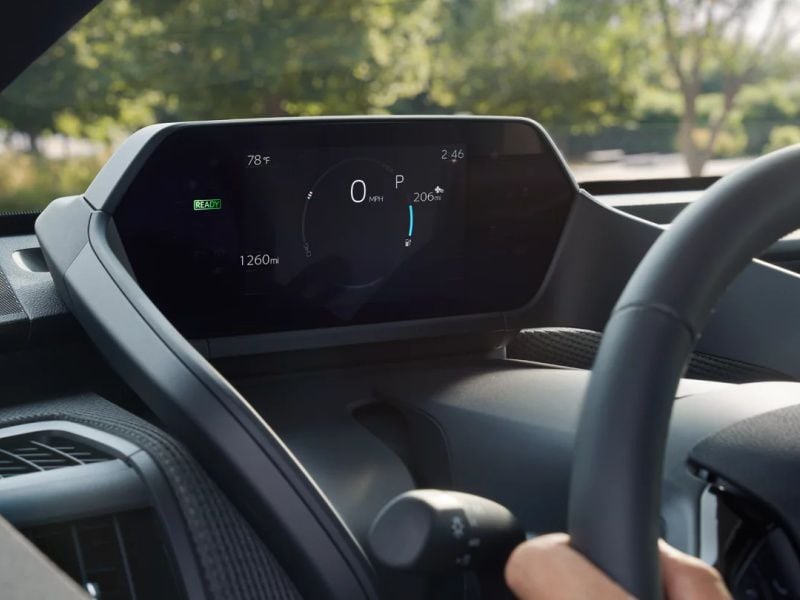
Photo by Toyota
9. Electronics Aid Off-Road Capabilities
The Toyota bZ4X’s AWD system has X-MODE, a contribution from Subaru, the company that co-developed the platform. The complex electronic system is designed to limit tire slip by controlling throttle, transmission, all-wheel-drive, electronic stability control, and hill descent control. The application is supplemented with Grip-Control, which leverages motor drive characteristics to enhance off-road performance. The bZ4X also features a redesigned accelerator pedal that creates a smoother feel when accelerating and decelerating. It is coupled to an intelligent throttle with slip suppression to provide better control on slick road surfaces.
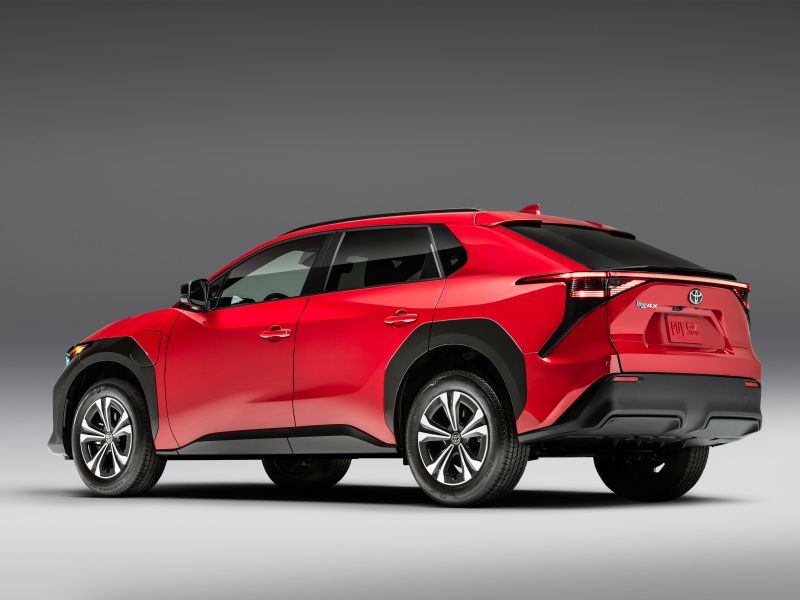
Photo by Toyota
10. Built for the Long-Haul
One thing you don’t hear too much about in battery electrics is long-term performance. Batteries degrade with use and time, and Toyota says it is determined that its BEVs will be worthy of its reputation for quality, reliability, and dependability. The automaker says it is targeting a battery-capacity retention of 90% after 10 years of ownership. It is also taking special steps to ensure good performance in cold climates that are particularly challenging to battery-electric vehicles. Battery safety is also a high priority. For instance, the battery pack housing is designed to withstand a collision from any angle due to its frame and cross-bracing design.

Photo by Toyota